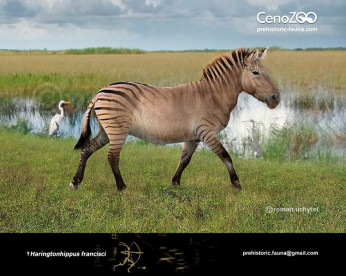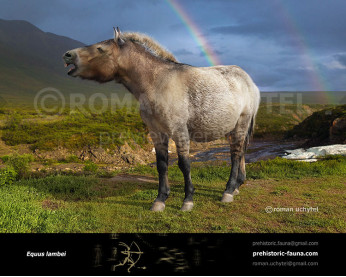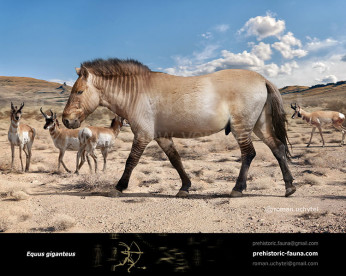Equus scotti (Scott's horse)
451451
Scott's horse (†Equus scotti (Gidley, 1900))
Order: Perissodactyla
Family: Equidae
Expansion: late Pleistocene of North and South America (4.9–0.009 Ma)
Dimensions: 2,2 m in length, 130-140 cm in height, 180 - 270 kg of weight
Equus scotti is an extinct species of Equus, the genus that includes the horse. E. scotti was native to North America and likely evolved from earlier, more zebra-like North American equids early in the Pleistocene epoch. The species may have crossed from North America to Eurasia over the Bering land bridge during the Pleistocene. The species died out at the end of the last ice age in the large-scale Pleistocene extinction of megafauna.
It was among the last of the native horse species in the Americas until the reintroduction of the horse approximately 10,000 years later, when conquistadors brought modern horses to North and South America around the 16th century.
Paleontological excavations have identified the locations of numerous places where E. scotti occurred. The species was named from Rock Creek, Texas, United States, where multiple skeletons were recovered. A closely related fossil find was made of Equus bautistensis in California; this species appeared closely related, but of a slightly more primitive form than E. scotti. However, E. bautistensis was redefined as a junior synonym of E. scotti in 1998 by paleontologist E. Scott, who also assigned fossils from the Anza-Borrego Desert in California, tentatively interpreted to represent E. bautistensis, to E. scotti. One of the reported locations farthest south in the Americas is Pali Aike National Park in Chile.
Eurasian stenonoid horse
Equus sussenbornensis (†Equus (H.) sussenbornensis (Wüts, 1901))
Order: Perissodactyla
Family: Equidae
Expansion: late Pleistocene of Eurasia
Dimensions: 2,3 m in length, 130-150 cm in height, 185 - 280 kg of weight
Payment
You may use multiple payment methods to buy image such as credit cards, PayPal and bank transfer.
Scott's horse (†Equus scotti (Gidley, 1900))
Order: Perissodactyla
Family: Equidae
Expansion: late Pleistocene of North and South America (4.9–0.009 Ma)
Dimensions: 2,2 m in length, 130-140 cm in height, 180 - 270 kg of weight
Equus scotti is an extinct species of Equus, the genus that includes the horse. E. scotti was native to North America and likely evolved from earlier, more zebra-like North American equids early in the Pleistocene epoch. The species may have crossed from North America to Eurasia over the Bering land bridge during the Pleistocene. The species died out at the end of the last ice age in the large-scale Pleistocene extinction of megafauna.
It was among the last of the native horse species in the Americas until the reintroduction of the horse approximately 10,000 years later, when conquistadors brought modern horses to North and South America around the 16th century.
Paleontological excavations have identified the locations of numerous places where E. scotti occurred. The species was named from Rock Creek, Texas, United States, where multiple skeletons were recovered. A closely related fossil find was made of Equus bautistensis in California; this species appeared closely related, but of a slightly more primitive form than E. scotti. However, E. bautistensis was redefined as a junior synonym of E. scotti in 1998 by paleontologist E. Scott, who also assigned fossils from the Anza-Borrego Desert in California, tentatively interpreted to represent E. bautistensis, to E. scotti. One of the reported locations farthest south in the Americas is Pali Aike National Park in Chile.
Eurasian stenonoid horse
Equus sussenbornensis (†Equus (H.) sussenbornensis (Wüts, 1901))
Order: Perissodactyla
Family: Equidae
Expansion: late Pleistocene of Eurasia
Dimensions: 2,3 m in length, 130-150 cm in height, 185 - 280 kg of weight

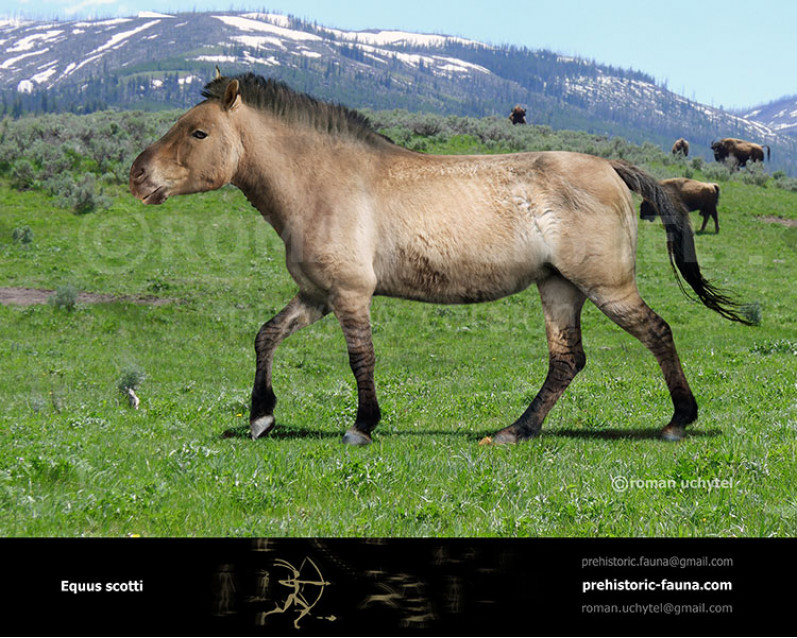
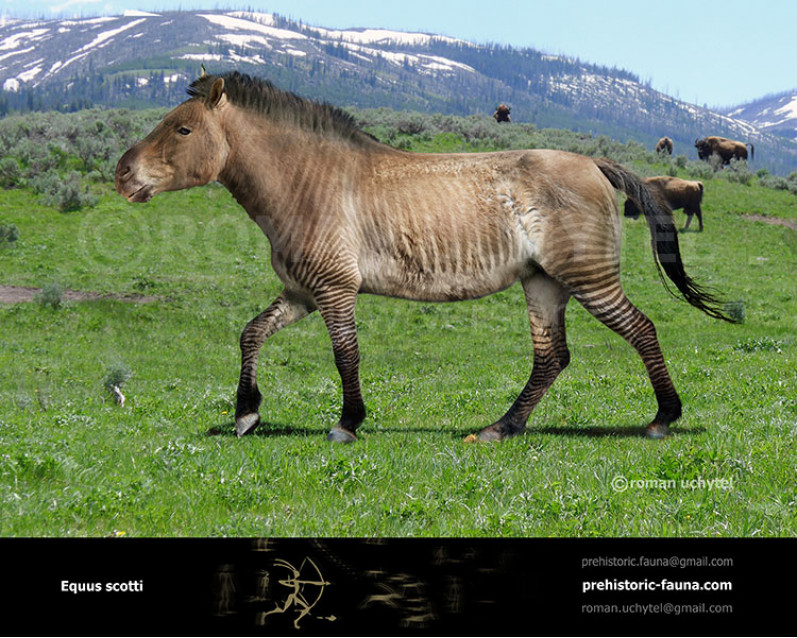
-797x638.jpg)
1-797x638.jpg)
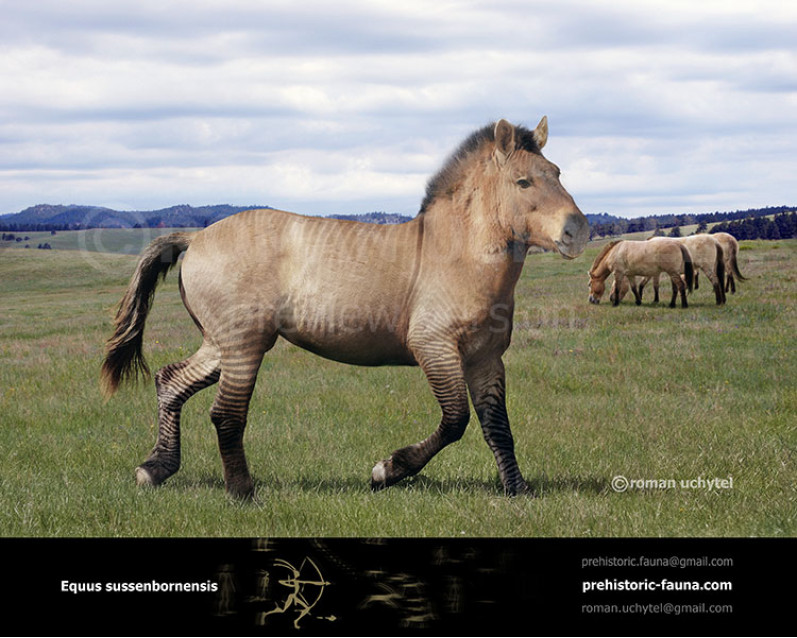


-70x56.jpg)
1-70x56.jpg)

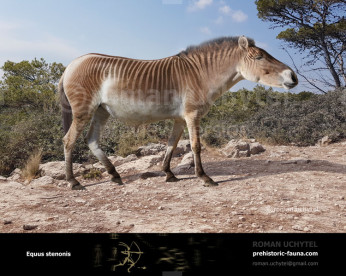
-346x277.jpg)

